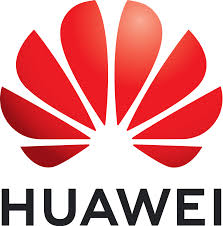
According to a United Kingdom government report, the country’s telecom networks have been exposed to new security risks because of technical issues and issued with the equipment supply-chain of Chinese firm Huawei.
Top of Form
The debate over espionage around Huawei Technologies would be further stoked by the report – the assessment of which has been made and signed by Britain’s GCHQ spy agency. The debate and the company has been facing this problem in the United States and in Australia as there are concerns that the company equipment could allow spying by the Chinese government.
The releasing the report came after a Reuters report quoted some senior British security officials as saying that they can now only provide partial assurance about no threat to national security being posed by UK operations of Huawei.
“Identification of shortcomings in Huawei’s engineering processes have exposed new risks in the UK telecommunication networks and long-term challenges in mitigation and management,” officials said in the report.
The thrust of the report by the Huawei Cyber Security Evaluation Centre (HCSEC) oversight board was welcomed by it, Huawei said. It is the largest manufacturer of telecoms equipment in the world.
“The report concludes that HCSEC’s operational independence is both robust and effective. The Oversight Board has identified some areas for improvement in our engineering processes,” a Huawei spokesman said.
“We are grateful for this feedback and are committed to addressing these issues. Cyber security remains Huawei’s top priority, and we will continue to actively improve our engineering processes and risk management systems.”
No backdoor vulnerabilities in its equipment have ever been found by any inspection, Huawei says. The company is not subject to Chinese security laws overseas because it a private company and is not under the control of the Chinese government, Huawei has said earlier.
in Britain, a large part of the broadband gear and mobile networks is supplied by Huawei. This means that the products of the company are made use of in critical national infrastructure that can be the target of foreign adversaries.
A special company laboratory overseen by British government and intelligence officials reviews products from Huawei, says London trying to assure its effectiveness in addressing the security concerns.
Huawei itself had set up the laboratory in 2010 and it is known as HCSEC. This was a measure that the company had taken to mitigate concerns of the British government about possible security threats to national infrastructure. The oversight board of the lab is headed by British security officials which also includes from GCHQ and these officials annually file report about the work done at the lab.
However, this is the first time that the level of security assurance has been downgraded by the oversight board about the cover that is provided by the HCSEC.
Officials said HCSEC provided “unique, world-class cyber security expertise and technical assurance.” However, they also said that security researchers’ ability to check internal product code was limited by technical issues that had been identified.
(Source:www.scmp.com)
Top of Form
The debate over espionage around Huawei Technologies would be further stoked by the report – the assessment of which has been made and signed by Britain’s GCHQ spy agency. The debate and the company has been facing this problem in the United States and in Australia as there are concerns that the company equipment could allow spying by the Chinese government.
The releasing the report came after a Reuters report quoted some senior British security officials as saying that they can now only provide partial assurance about no threat to national security being posed by UK operations of Huawei.
“Identification of shortcomings in Huawei’s engineering processes have exposed new risks in the UK telecommunication networks and long-term challenges in mitigation and management,” officials said in the report.
The thrust of the report by the Huawei Cyber Security Evaluation Centre (HCSEC) oversight board was welcomed by it, Huawei said. It is the largest manufacturer of telecoms equipment in the world.
“The report concludes that HCSEC’s operational independence is both robust and effective. The Oversight Board has identified some areas for improvement in our engineering processes,” a Huawei spokesman said.
“We are grateful for this feedback and are committed to addressing these issues. Cyber security remains Huawei’s top priority, and we will continue to actively improve our engineering processes and risk management systems.”
No backdoor vulnerabilities in its equipment have ever been found by any inspection, Huawei says. The company is not subject to Chinese security laws overseas because it a private company and is not under the control of the Chinese government, Huawei has said earlier.
in Britain, a large part of the broadband gear and mobile networks is supplied by Huawei. This means that the products of the company are made use of in critical national infrastructure that can be the target of foreign adversaries.
A special company laboratory overseen by British government and intelligence officials reviews products from Huawei, says London trying to assure its effectiveness in addressing the security concerns.
Huawei itself had set up the laboratory in 2010 and it is known as HCSEC. This was a measure that the company had taken to mitigate concerns of the British government about possible security threats to national infrastructure. The oversight board of the lab is headed by British security officials which also includes from GCHQ and these officials annually file report about the work done at the lab.
However, this is the first time that the level of security assurance has been downgraded by the oversight board about the cover that is provided by the HCSEC.
Officials said HCSEC provided “unique, world-class cyber security expertise and technical assurance.” However, they also said that security researchers’ ability to check internal product code was limited by technical issues that had been identified.
(Source:www.scmp.com)





